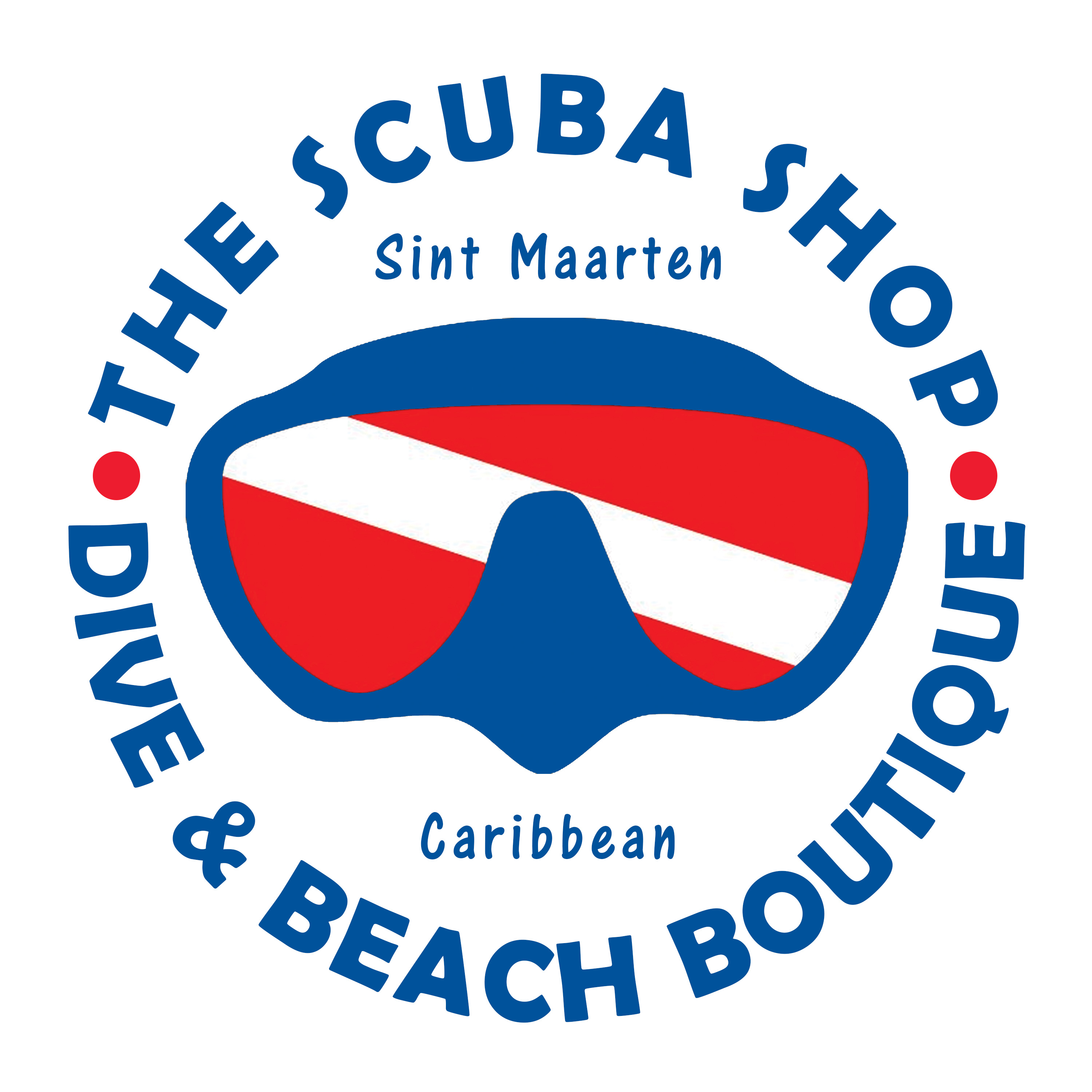Buying Tips
Buying Tips for Snorkel Gear
We stock snorkel
gear from 4 major suppliers, each offering a multitude of styles and colours - the task of choosing the right snorkeling gear can be
daunting. Luckily our staff in the shops can help you
find the perfect gear for years of snorkeling and diving fun - be
prepared to spend a bit of time with us, trying everything on to make
sure you get the perfect fit..
There are 3 main items you need, Mask, Snorkel and
Fins. Optional
extras include Snorkel Vest, towable Dive Flag, Fish and Critter ID
Card, Waterproof Camera, Lycra Protection and a Mesh
Bag to carry it all in.
The Mask
The mask is your window to the underwater world. It provides an air
pocket so your eyes can focus and you can see clearly underwater. Your
nose must be within the eye pocket so you can adjust for pressure
changes (this is why swim goggles cannot be used for snorkeling). Look
for masks that feature tempered glass lenses, double silicone skirts and
wide, comfortable head straps with easy to adjust buckles. Depending on
your personal preference and face features, options include single or
double lens, side lenses, purge valve, black or clear silicone skirt....
A good quality mask will have it's lens(es) made out of
high quality impact resistant (tempered) glass, not
plastic and the mask skirt will be made out of 100%
silicone, not some other material like rubber or PVC.
Don't buy a cheap mask - they may look the same,
but the things you can't see (quality of skirt and lens material) are just as
important as those you can. It is one of your most important pieces of
gear.
How to Fit a Mask
A correctly fitted mask will seal smoothly to keep keep water
out. To make sure a mask seals well,
hold it against your face without using the strap around the back of
your head and breathe in through your nose. If
the seal is good the mask will "stick"
to your face nicely and you can let it go without it dropping.
Hair trapped under the skirt of the mask will cause it to leak so make
sure you brush away any stray hair (or shave) before trying on a mask.
Once you are sure the mask seals correctly, make sure the skirt is
not pressing up under your nose, that there is no pressure against the
bridge of your nose or on your forehead between your eyes. Press the
mask in towards your face and make sure it still feels good - when you
are snorkeling or diving the water pressure will press the mask onto
your face a bit.
Now try it with the mask strap on your head. You should
get an airtight fit with very light strap pressure. The
strap should sit high on the back of your head, not
resting on or over your ears as this will begin to hurt
after a few minutes. If you have to pull the straps
tight to get a fit then the mask is the wrong size for
your face. If you have big red marks when the mask comes
off, you have the strap way too tight. A leaky mask is
more often a case of straps too tight than too loose.
Also, make sure with the mask fully on that you can
easily pinch your nose so that you can clear your ears
when diving underwater.
Lastly, with your mask on with the strap around your
head, put a snorkel or regulator mouthpiece in your
mouth and see what happens to the seal. Sometimes after
inserting the mouth piece a simple re-adjustment of the
mask will allow it to seal properly again, but sometimes
it is back to the shelf to choose another mask.
Finally, if you have found a mask that fits you
perfectly, buy it! This is the one piece of equipment
that can make or break your snorkeling experience so
spending a little extra is well worth it if the mask
fits well.
How to Defog a Mask
Before using your mask for the first time,
scrub the inside of the lens(es) with plain toothpaste (you can scrub
with your tooth brush or a clean finger). The
lenses need to be cleaned because there might be some anti-caking agent
on it, used to mould the silicone skirt onto the mask, which will cause
it to fog up very easily when snorkeling. Rinse
thoroughly, preferrably with hot water afterwards.
It is very good practice to repeat this clean throughout the life of
your mask - dirt on the inside of the lens(es) will cause them to fog
up.
Then, before each dive, use defogging solution
according to the instructions. Or, for a less sanitary, but cheaper
method, spit into your clean, dry mask, swirl or gently wipe it around on the lens(es) and give it a quick rinse in the sea before putting on your
face. Note: this method does not work so well after a greasy lunch!
[top]
The Snorkel
The snorkel lets you breathe with your face in the water. A
snorkel should fit comfortably in your mouth with the tip at the crown
of your head. The vast majority of snorkels will do this easily with
minor adjustments, so your primary selection considerations are mouthpiece
comfort and features.
In our shops you will
find a wide array of snorkels which basically
fall into four categories:
Snorkels have many different mouthpieces, from the more rigid PVC to
soft silicone, different sizes or the so called ‘comfort’ mouthpieces.
Some snorkels have handy detachable snorkel keepers, so you can store
your mask in its box easily. There are snorkels with an extra wide tube
for maximum air inhalation and of course snorkels come in as many
colours as masks.
[top]
The Fins (aka Flippers)
In the diving industry we like to call those large floppy "shoes", also
referred to as "flippers", fins.
Fins provide a large surface area to push against the water allowing you
to swim using your powerful leg muscles to move you more efficiently
through the water and frees your hands. Snorkel fins should also provide
some floatation for your feet which helps to keep you horizontal on the
surface.
Fins basically come in two types
The Full Foot Fins, where you can slip in bare foot, are mostly
used for snorkeling and diving in warm waters, and the Open Heel Fins
(with neoprene boot), mostly used for scuba diving and colder waters,
which are more comfortable and usually more powerful.
Which type of fin you choose depends on where and how you want to use your
fins. Do you only snorkel or are you a scuba diver too. Is there any
current where you snorkel or dive?
Full Foot Fins are easy to don and off, ideal for warmer waters and
lighter in weight which makes them easier for travelling.
If you are planning to snorkel or dive in colder waters as well as
our warm tropical waters, then an Open Heel Fin with a boot would be
your choice. The same goes if your feet get cramped or blistered easily,
or if you are just between sizes. Dive instructors, even in warmer
waters, prefer open heel fins since they are more durable and, as most
are designed for scuba diving, more models are designed to achieve a more
powerful thrust which is sometimes needed for chasing after wandering
guests.
There are some exceptions to the rule of open heel fins needing a
neoprene boot – we do stock a simple Snorkel Fin with an open heel that
is designed to be worn without a boot. This fin is not as comfortable as
a good fitting Full Foot Fin, but the advantage is that it can be used
by a number of different people with a wider foot size range or growing
kids..
How to correctly fit your fins
Here’s how to be sure you get the right size :
Full Foot Fins run 2 sizes at a time so don't expect to
get an exact fit like with a sneaker.
- The most common mistake is buying fins that are too small - you
want a snug fit, not too tight, not too loose.
- You should just be able to insert a small finger between your
heel and the back of the foot pocket - if you can't get your finger
in your fins could be too tight. If you finger wiggles around with
room to spare your fins are too loose.
- Your fins will get slightly looser in the water and slip easier
so you don't want them too loose.
- Also make sure that there are no hard spots that dig in when you
flex your foot back and forth (it is easier to test this when
sitting on a stool) - this can happen at the sides if there is hard
plastic on the bottom part of the foot pocket.
- It is not necessary to see your toes stick out the end, however
if you have narrow feet they will - in this case you need to make
sure that your toes are not "squeezed" out the opening and that the
edges do not rub your toes, in particular on the top.
Open Heel Fins with Neoprene Boots are usually much
more comfortable than Full Foot Fins with the added benefit that they
keep your feet warm.
- Try the fins on wearing your neoprene boots, or the most similar
ones in the dive shop.
- Put your bootied foot into the fin pocket. You don’t need the strap.
Your foot should go all the way in until the top edge of the pocket
reaches just in front of your ankle. If your foot slides in too far,
the top edge of the pocket will irritate the front of your ankle.
Your toes do not have to reach the end of the foot pocket.
- If your foot slides only part way in either because it is too
tight or your toes reach the end, the fin is too small, even if it
feels fine. A fin that goes only partially onto your foot will
overtire you because it has too much leverage against your ankle.
- Once you have the right size, adjust the strap to fit so it is
snug but comfortable.
- The fin pocket size and blade size correspond, so that for most
people, if the fin fits your foot, the blade size is right.
[top]
Kids Snorkeling Gear
Kids love snorkeling too! Our kids snorkeling
gear is of the same quality as our adult
snorkeling gear, but designed to fit smaller
faces, mouths and feet. We even have snorkels with Dry Tops for the
little ones.
[top]
Snorkeling Vest
A snorkel vest floats you at
the surface and adds visibility for safety. We
prefer bright orange or yellow inflatable snorkel vests (not solid foam)
- these allow you to have just the amount of air you need, or no air at
all until you need it, so that you can still free dive to get a closer
look at the underwater world. Snorkeling Bags
Keep it together with a
snorkeling bag. From simple
mesh bags to dedicated over the shoulder bags with padded straps to mesh
duffel bags for multiple sets, a snorkel bag will keep
your snorkel gear in one
place and make it easy to
carry and clean after use.
Lycra Protection
A lycra Rash Guard will protect against contact from marine
life (jelly fish). Look for ones that include a
high sun protection rating for that added protection against sunburn.
[top]
Click here for Maintenance and Cleaning
Tips
|




